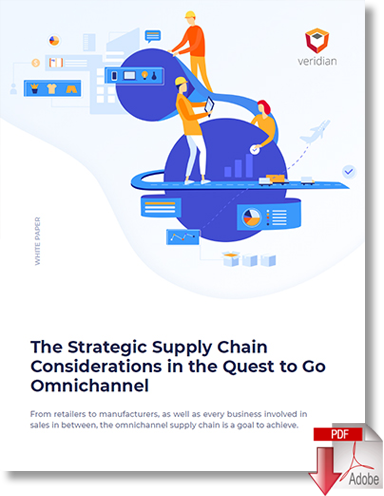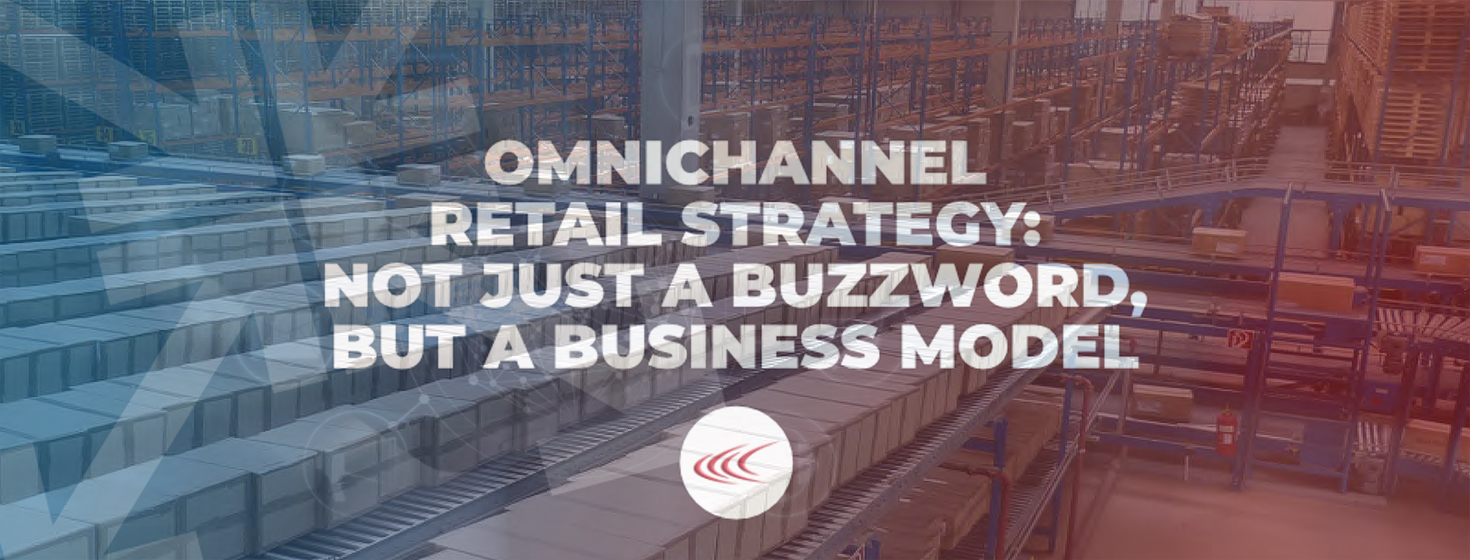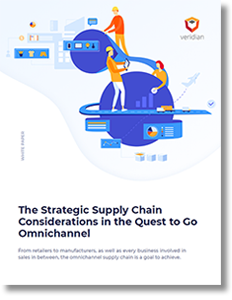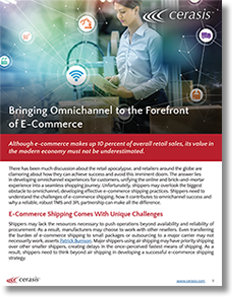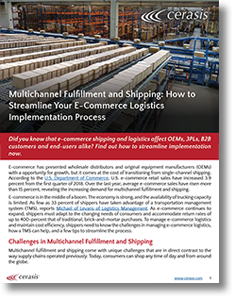Differences between Omnichannel & Omnichannel 2.0

Unlike the original definition of Omnichannel, Omnichannel 2.0 is about bringing the entire enterprise together, not just enabling support within legacy systems for an omnichannel approach, retailers and supply chain leaders must increase proficiency across all channels, engaging with consumers and personalizing the shopping experience.
Omnichannel Meaning
Omnichannel is a term frequently used in today’s modern supply chain management.
Omnichannel capability is associated with getting products to the customer in any possible fashion, that is convenient for the customer.
The emergence of ecommerce mainly drives this, and in the process, is turning traditional supply chain models on their heads.
While omnichannel refers to the integration and seamless experience across channels for supply chain partners, omnichannel 2.0 takes it a bit further.
Supply chain leaders need to understand omnichannel 2.0 and what it means for transforming the customer experience.
What Exactly Is Omnichannel 2.0, and How’s It Different From The Original Omnichannel?
Traditional omnichannel, also known as “original omnichannel,” referred to the blending of supply chain channels to allow customers to shop from any channel seamlessly.
This required supply chains to integrate storefronts, distribution centers, and online ordering processes into an overarching platform.
Unfortunately, disruptions in the customer experience continued to exist.
The current technology within omnichannel has led to inconsistencies and growing complexity, and instead of the iconic overarching and adoptive platform, many retailers have continued to use legacy systems through custom interfaces that lead to inefficiencies and integration problems, reports NCR.com.
Omnichannel 2.0 means retailers and supply chain leaders must increase proficiency across all channels, engaging with consumers and personalizing the shopping experience. This allows retailers and the supply chain to eliminate the barriers to new technology implementation, offer better customer service, and prepare for the next innovation.
Ultimately, omnichannel 2.0 is about bringing the entire enterprise together, not just enabling support within legacy systems for an omnichannel approach.
What Are the Benefits of Omnichannel 2.0?
Omnichannel 2.0 offers many benefits for both consumers and retailers, including:
- Greater control over key performance indicators.
- Flexible fulfillment options across multiple channels.
- End-to-end visibility.
- Better risk management strategies.
- Improved inventory management, reducing instances of overstocking and under stocking.
- Improved IT processes and true integration between systems.
How to Embrace Omnichannel 2.0
Although original omnichannel is evolving, its best practices continue to thrive. Retailers and warehouses must work to please more customers, stay competitive with Big Box retailers and Amazon, and still create a unique customer experience.
Failure to exhibit the traits of omnichannel 2.0 will result in a lost competitive advantage, higher overhead, and higher employee turnover rates. Fortunately, supply chain leaders can follow a few steps to make sure they are ready for the omnichannel 2.0 wave. According to the Wharton University of Pennsylvania, the measures to fully utilize omnichannel 2.0 in the modern retail world include:
- Integrate and widen vendor base. Supply chain leaders need to begin the process by integrating existing systems and expanding their vendor base. This will allow companies to tap into the value of newer, more adaptable and flexible supply chain systems.
- Break Omnichannel 2.0 Implementation Into Steps, Not One Giant Leap. One of the most significant limitations in implementing an omnichannel 2.0 strategy lies in a failure to understand how rapid change across an entire enterprise can lead to disruptions. Instead of applying all omnichannel 2.0 processes at once, supply chain leaders should focus on implementing small changes.
- Develop and Maintain a Customer-Centric Strategy. Customer-centricity is the cornerstone of omnichannel 2.0, and many companies have fallen into a high-cost model of trying to meet omnichannel standards with legacy systems. Only 16 percent of companies can fulfill omnichannel demand profitably, so any investments into omnichannel must focus on improving profitability and meet growing customer demands.
- Engage With Customers to Obtain Feedback. Customer feedback plays a vital role in the ongoing development of Omnichannel 2.0. Customer expectations will continue to evolve as retailers offer new, exciting services as part of the omnichannel trend. Thus, retailers have a unique opportunity to be the first to stand out from the crowd by connecting with customers and finding out what they can do better to provide a superior customer experience.
Take Advantage of Omnichannel 2.0 Novelty Now
Omnichannel 2.0 is not just the next evolution; it is the ultimate standard for customer experiences in modern supply chain management. Customers want their products now, from any ordering portal, the ability to pick up online orders from in-store locations, have another piece shipped to their home, and still have the option of getting notifications on their phones when they enter a store about items on sale.
This will require an entirely new generation of integrated systems and the ability to rapidly scale productivity with limited resources. In other words, omnichannel 2.0 needs warehouses to abandon their legacy systems and move into the digital age with integrated, comprehensive platforms.
About the Author
Jason Rosing is founding partner of Veridian; a valued Manhattan Associates partner and technology leader specializing in user-friendly, robust and flexible automated testing and configuration management solutions designed to meet the ever-changing challenges of the omnichannel landscape.
Source: Cerasis
Photo Credit: Getty Images & Veridian
Related Article: How to Develop an Omnichannel Retail Business Model
Related White Papers
Strategic Supply Chain Considerations in the Quest to Go Omnichannel New!
This white paper describes how, from retailers to manufacturers, as well as every business involved in sales in between, the omnichannel supply chain is a goal to achieve. Download Now!
Bringing Omnichannel to the Forefront of Ecommerce
This white paper is a must read for those who are looking to go omnichannel with their supply chain and want to understand that a major part of that strategy is in the ecommerce channel. Download Now!
Multichannel Fulfillment & Shipping: Streamlining Your Ecommerce Logistics Implementation Process
This white paper is a must read for those shippers of larger freight and surface freight who are wanting to open channels, such as direct to consumer by using e-commerce, beyond traditional ones. Download Now!
How Blockchain will Aid Retailers & Shippers in Achieving Omnichannel Supply Chain Goals
This educational white paper is a must-read for shippers & retailers alike to learn how blockchain can aid in achieving omnichannel supply chain goals. Download Now!
More Resources from Cerasis
Article Topics
Cerasis News & Resources
GlobalTranz Appoints Executive Chairman Bob Farrell as Chief Executive Officer Amazon’s Drone Delivery Hits Milestone with Federal Aviation Administration Clearance Digital Supply Chain: The Landscape, Trends, Types, and the Application in Supply Chain Management Walmart’s Bid for TikTok Could Benefit the Retail Giant’s Ecommerce and Advertising Businesses The State of Ecommerce Logistics Heading into 2020 Peak Delivery Season Bringing Omnichannel to the Forefront of Ecommerce FedEx’s Fred Smith Optimistic About Economic Recovery as Ecommerce Business Booms More CerasisLatest in Supply Chain
Spotlight Startup: Cart.com Walmart and Swisslog Expand Partnership with New Texas Facility Nissan Channels Tesla With Its Latest Manufacturing Process Taking Stock of Today’s Robotics Market and What the Future Holds U.S. Manufacturing Gains Momentum After Another Strong Month Biden Gives Samsung $6.4 Billion For Texas Semiconductor Plants Apple Overtaken as World’s Largest Phone Seller More Supply Chain

